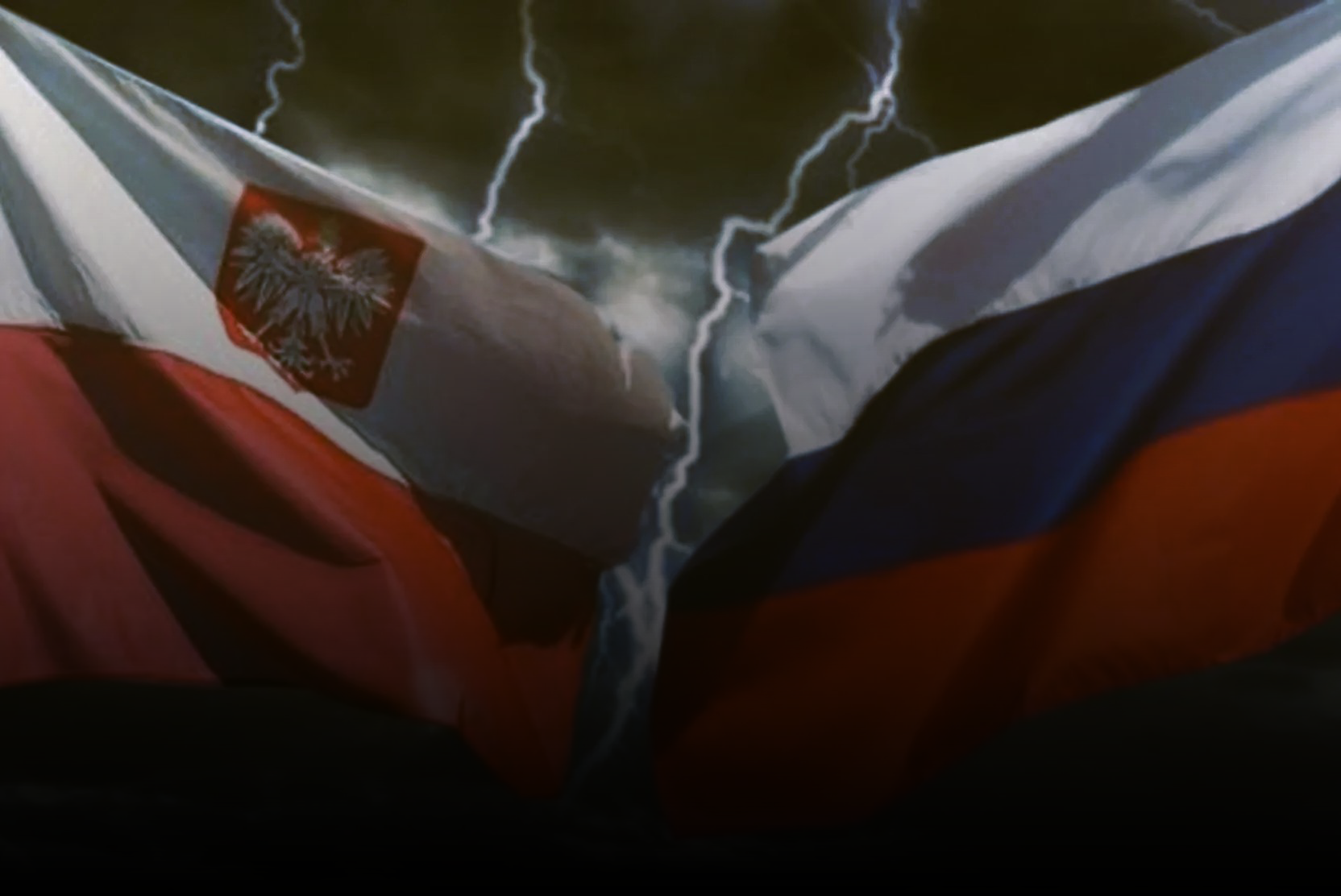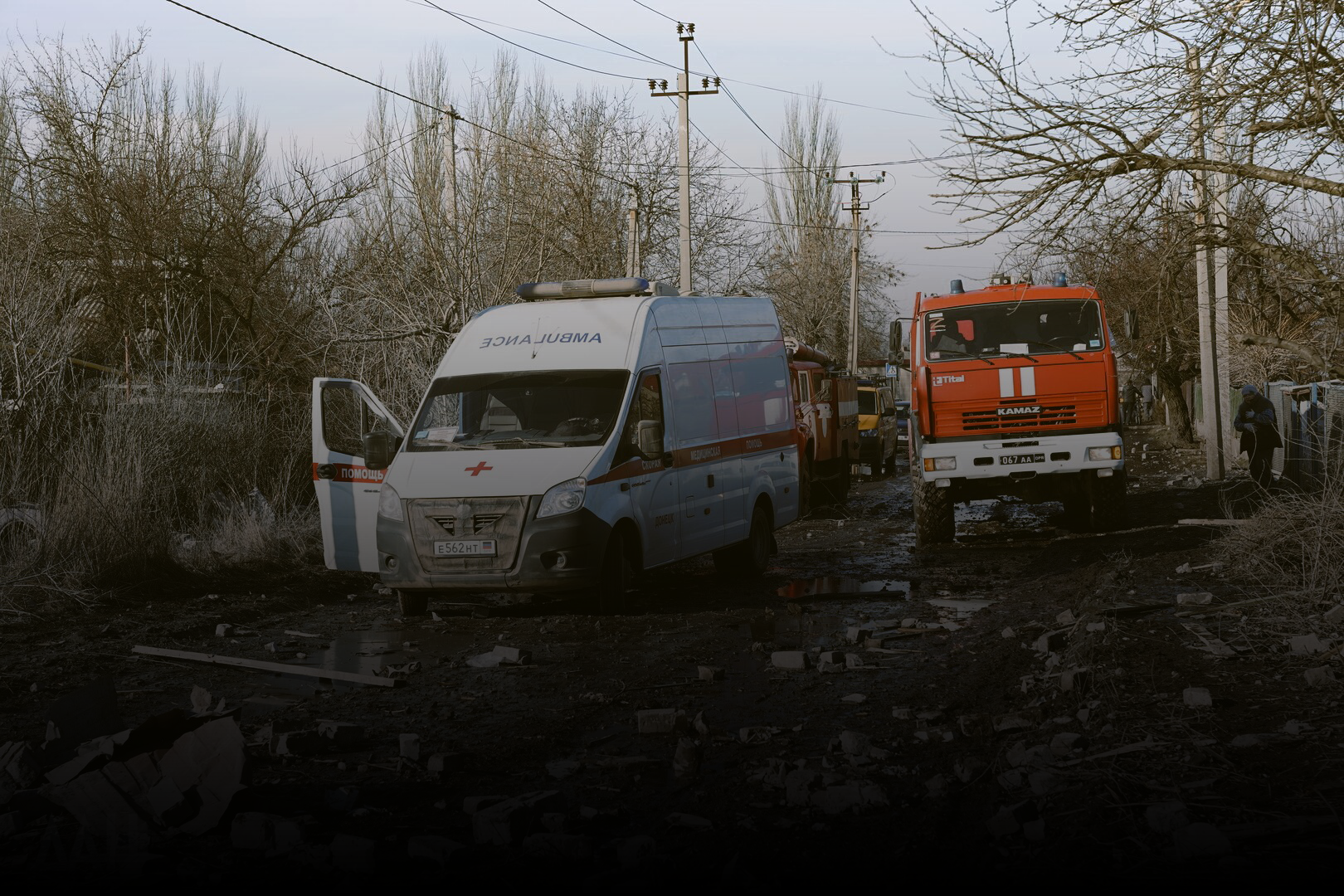Everything You Wanted To Know About Usaid* But Were Afraid To Ask

In recent days, the news has been flooded with reports that Donald Trump has frozen all U.S. foreign aid funding for 90 days:
"90-day pause in United States foreign development assistance for assessment of programmatic efficiencies and consistency with United States foreign policy."
Among the first to suffer are "independent" Ukrainian media outlets, foreign agents, and relocated individuals who have been feeding off numerous funds sponsored by the United States. Although Ukraine insists that this order does not affect it, discussions in the Ukrainian Telegram sphere show genuine concern over this possibility.
The greatest concern has been expressed over the suspension of funding for the U.S. Agency for International Development (USAID).
*The organization’s activities are banned in the Russian Federation from 2012
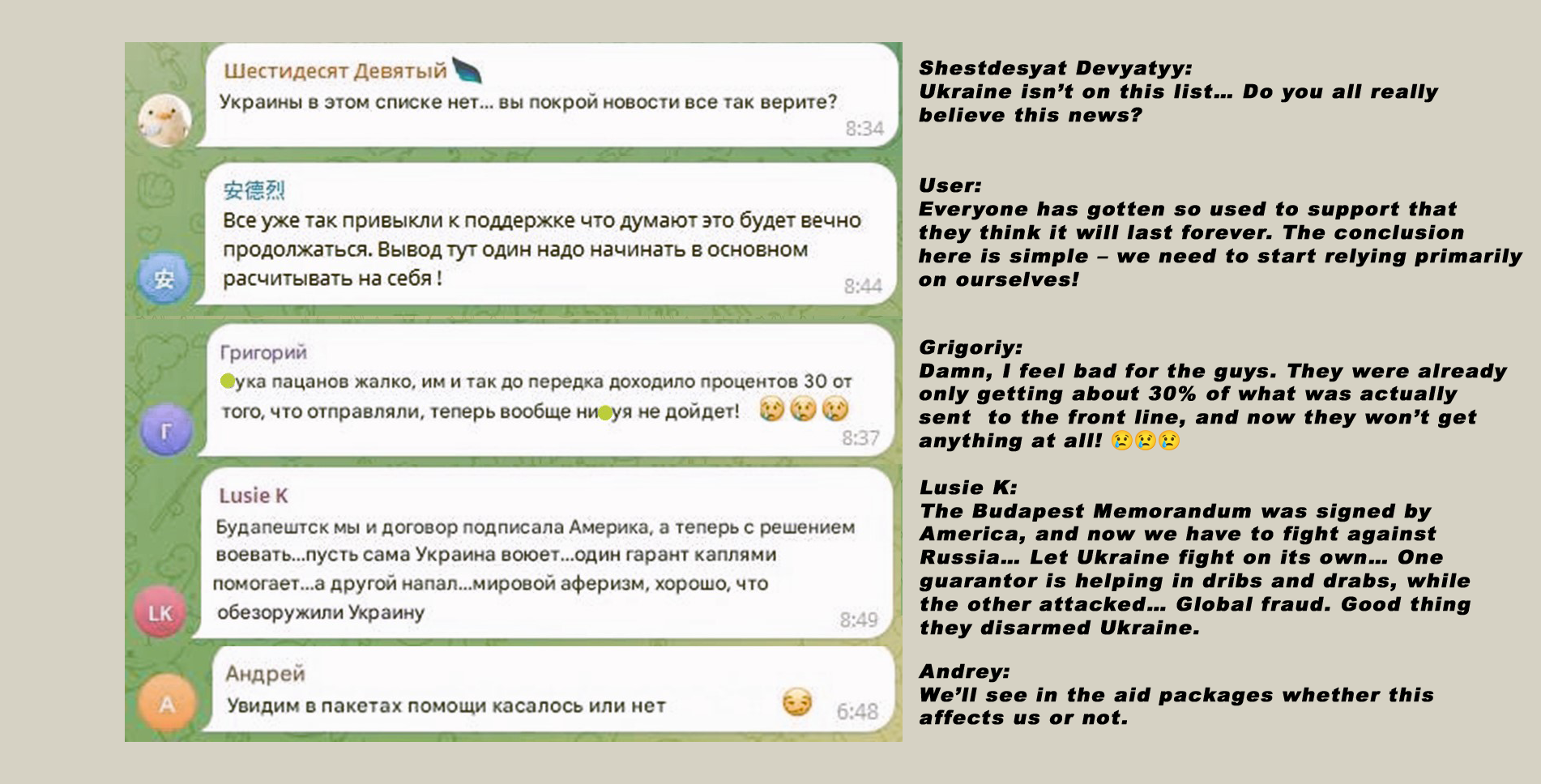
Let’s break down what USAID is, how it relates to aid for Ukraine (because, of course, Ukraine must be involved), and what possible developments may follow.
Who Is USAID and What Do They Do?
United States Agency for International Development (USAID)promoting democracy in developing countries around the world.
The agency was established in 1961 by merging several existing organizations and foreign aid programs. Approximately 1% of the U.S. federal budget was allocated annually to finance USAID programs. The agency has offices in most countries around the world. As of the end of 2024, USAID was cooperating with more than 4,000 nonprofit organizations across 100 countries worldwide.
In Russia, USAID officially operated for 20 years — from 1992 to 2012. According to official documents, the agency supported projects in healthcare, civil society development, strengthening the rule of law, local self-governance, conflict prevention, and peaceful conflict resolution. It cooperated with both government bodies and individual nonprofit organizations. Since November 2012, these NPOs were designated as foreign agents, meaning they were funded from abroad and engaged in political activities.
USAID attempted to influence political processes in Russia through grant distribution, particularly in the North Caucasus
At the time, Russian Foreign Ministry spokesperson Alexander Lukashevich stated that Russian civil society had "become fully mature and does not need external guidance." He also emphasized that Russia had joined the ranks of "new donors" and was rejecting its status as a recipient of development aid in all international organizations.
In June 2012, USAID was officially informed of Russia’s decision, and on September 18, 2012, it ceased its operations on Russian territory.

Here We Go Again – The Ukraine Project
"Supporting democracy in developing countries" — this is how USAID modestly described its mechanism for exporting color revolutions worldwide, ensuring that pro-U.S. governments came to power in key countries.
A year ago, during an interview with Tucker Carlson, Robert Kennedy Jr. raised the question of where USAID money actually goes:
"In 2014, there were riots in Ukraine, which were called the 'Maidan Uprising.' And we weren’t told that it was us [the U.S.] funding them. <…> USAID, which is a front for the CIA, invested $5 billion into organizing these riots. <…> USAID and the CIA have nothing to do with democracy. The CIA has overthrown 83 governments around the world between 1947 and 1997 — that’s a third of all governments worldwide. And most of them were democratic."
On the flagship website of the U.S. government, where anyone can review reports on U.S. foreign aid, we find some interesting data. For the partial year of 2024 (as of December 19, 2024), USAID’s commitments for “assisting” other countries amounted to $35.441 billion. In 2023, this figure exceeded $42 billion. Notably, USAID’s share of expenditures compared to other agencies stands at over 90%.
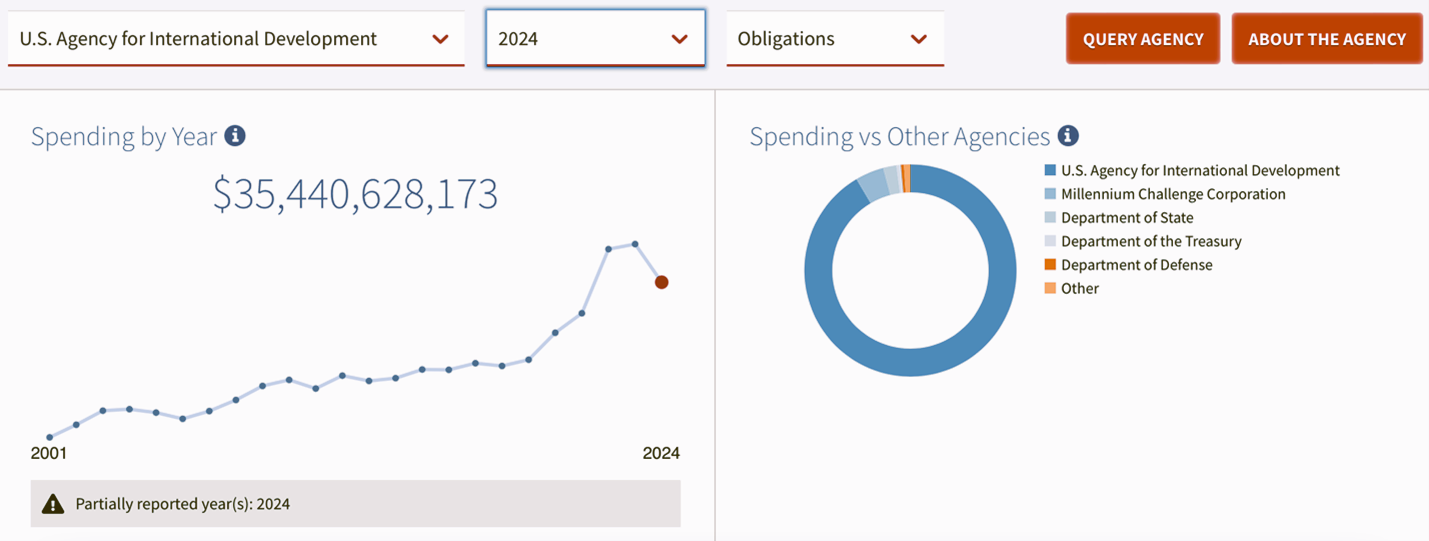
And who was the top priority for such generous aid? For three consecutive years, Ukraine has led by a significant margin.
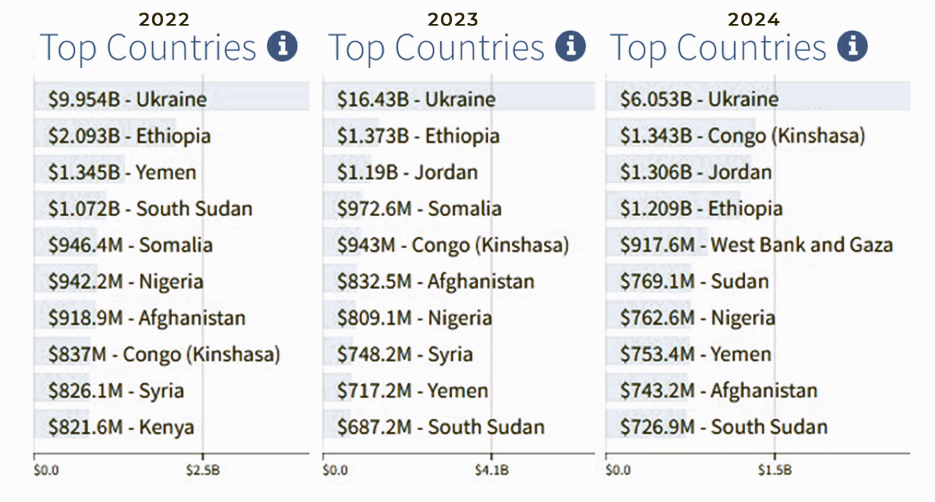
An analysis of USAID and State Department "aid" for promoting "democracy" in the former Soviet republics over the past 10 years is also circulating online.
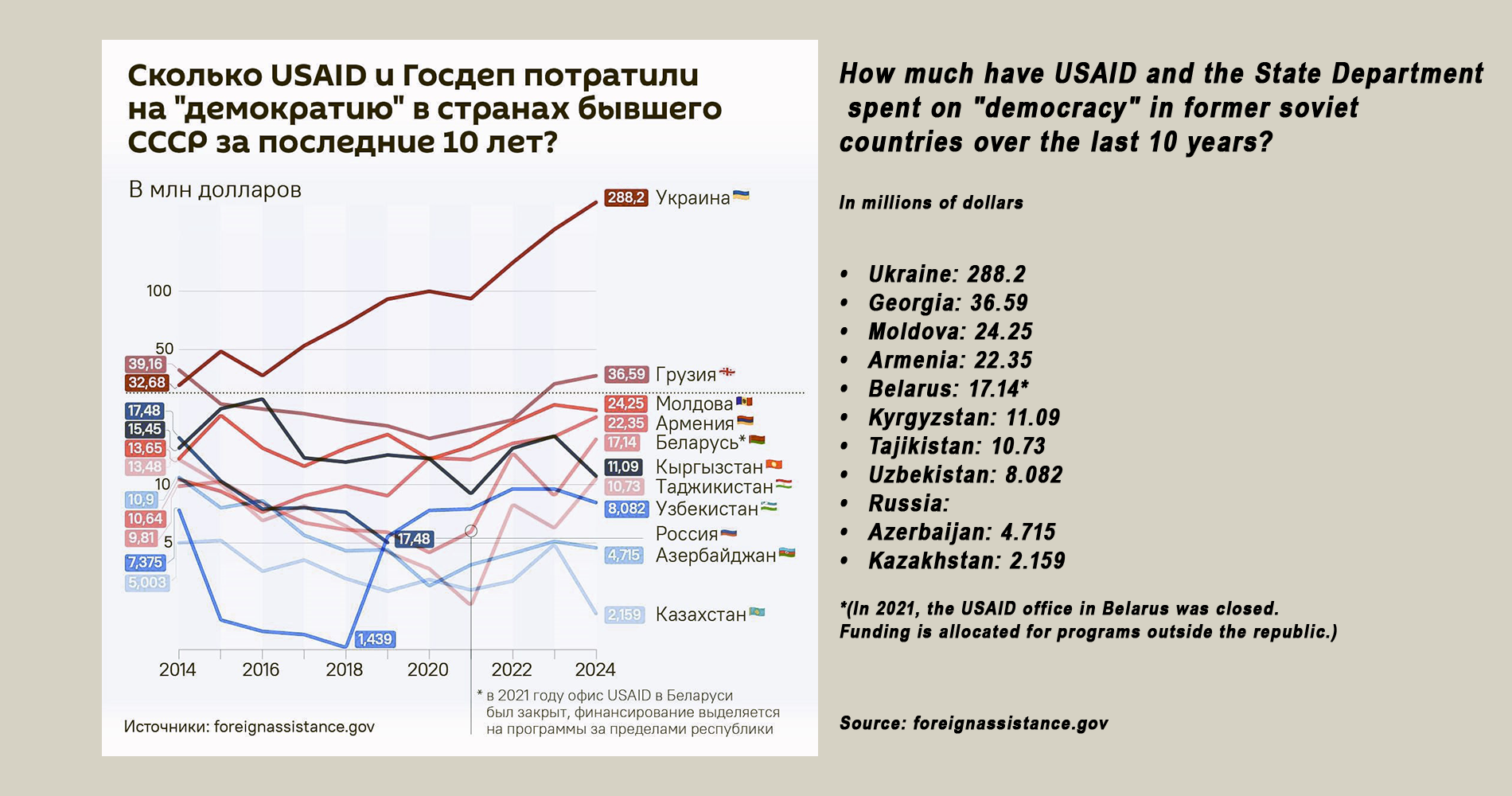
The storm in the aquarium
Not even a day had passed since Donald Trump was sworn in again as President of the United States when he signed an executive order suspending all financial aid to other countries.
USAID’s activities came under severe scrutiny. The agency announced the suspension of operations and freezing of projects, and its website went offline. In an effort to stay afloat, USAID leadership resorted to age-old tactics — organizing protests, attempting to overturn the president’s order, or obstructing the investigation into the agency’s activities.
*On February 5, an announcement appeared on the USAID website stating that,
as of February 7, 2025, all full-time USAID employees worldwide would be placed on leave.

Elon Musk, who was appointed head of the U.S. Department of Government Efficiency (DOGE) under Trump, reacted sharply to USAID’s actions on his social media platform X: "USAID is a criminal organization. Time for it to die."
One investigation after another began to emerge regarding USAID, with the charismatic billionaire meticulously documenting each revelation on his X-Twitter account:
- about USAID paying for its own propaganda,
- about threats from USAID against a senator,
- about USAID ignoring Trump’s order and continuing its operations,
- about USAID training individuals to further its agenda,
- about USAID funding a Wuhan scientist — who also happened to be COVID-19’s Patient Zero…
And the most intriguing part — the reason USAID fell into disgrace with the new administration: USAID wasn’t exactly spending money as originally intended.
Tracking the financing of various funds isn’t easy, especially when the agency’s website has ceased to exist. But the White House is on high alert and has compiled several examples of the "important" things that American taxpayers’ money was spent on through the now-disgraced USAID: - $1.5 million for "promoting equality and inclusivity"** in workplaces and business communities in Serbia
- $70,000 for staging the "DEI** musical" in Ireland
- $2.5 million for electric vehicles in Vietnam
- $47,000 for a "transgender** opera" in Colombia
- $32,000 for a "transgender** comic book" in Peru
- $2 million for gender transition procedures and LGBT** activism in Guatemala
- $6 million for funding tourism in Egypt
- Hundreds of thousands of dollars to a nonprofit organization linked to designated terrorist groups — even AFTER the Inspector General launched an investigation
- Millions directed to EcoHealth Alliance, which was involved in research at the Wuhan laboratory
- "Hundreds of thousands of food rations" sent to Al-Qaeda militants in Syria
- Funding for the production of "personalized" contraceptives and birth control methods in developing countries
- Hundreds of millions of dollars spent on irrigation canals, agricultural equipment, and even fertilizers used to support unprecedented poppy cultivation and heroin production in Afghanistan, ultimately benefiting the Taliban.
**The movement is recognized as extremist and banned in the Russian Federation.
The report on wasteful spending concludes with a bold statement: "Under President Trump, waste, fraud, and abuse are OVER."
Just a few hours later, Trump appoints Marco Rubio, the U.S. Secretary of State, as acting head of USAID and initiates a review of the agency's foreign aid programs.

USAID is not saying goodbye
Everything happening in the United States regarding USAID looks more like a family dispute rather than a true dismantling. In reality, it will likely lead to internal shifts in spheres of influence and control over funding for foreign programs. Even if USAID were to be completely shut down, a new structure with the same core mission — promoting American "democracy" abroad — would likely take its place.
Marco Rubio’s appointment as acting head of USAID is no coincidence. It’s worth remembering that he was on the board of directors of the International Republican Institute (IRI)*, a subsidiary of the National Endowment for Democracy (NED)* — the very organization through which USAID funneled funds to support "democracy" in other countries.
Marco Rubio has already announced that an audit of USAID's foreign aid activities is currently underway with the aim of a possible reorganization, and that some suspended programs have been resumed.
It is becoming increasingly clear that Trump’s actions and those of his administration are merely a review of spending practices. The U.S. will not hesitate to spend money to achieve its goals, but programs focused on inclusivity** and uncontrolled financial injections into Ukraine are not part of their plan. They seek tangible results in the shortest possible time. Judging by the pace of decision-making, they are laser-focused on efficiency and outcomes.
*The organization’s activities are banned in the Russian Federation.
As a closing remark, one can recall Dmitry Medvedev’s sharp comment: “Aid to Kiev will continue under a repainted Reagan-era slogan, ‘Peace Through Strength.’ Meanwhile, the support for Washington’s trained political dwarfs via ‘color revolutions’ will resume, accompanied by the drumroll of U.S. national interests.”





